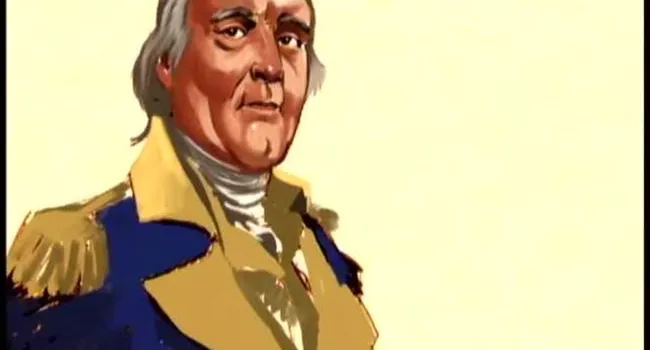Revolutionary War
Dr. Walter Edgar discusses the terminology used during this period, such as the Patriots, the Whigs, and the Partisans from the American side, for those who fought the King. The British called them Rebels. Dr. Christine Swager brings up the Continental Army, state troops, and local militia. Dr. Edgar states that the Americans called those who supported the King the Tories, the British called them Loyalists, and the diehard Patriots called them traitors. Dr. Swager states that there was a third group called Tory militia, who were local people who supported the British, who Cornwallis hoped would be able to hold the territory. Dr. Edgar states that they never had the same people with them all the time and the size fluctuated depending on where the enemy was. In Marion's band, there were Scots-Irish, French Huguenot, English and African American. Under Marion, there were free persons of color, slaves who were fighters, Native Americans, and local whites from the Pee Dee. Dr. Daniel Littlefield states that Africans were already involved in interracial groups in the backcountry, and when the Revolution broke out, runaway slaves or freed slaves joined Marion, who did not have the kind of racial ideology that would prevent him from attracting both black and white to his cause. One of Marion's slaves served faithfully as his servant and cook.
Marion's campaign after the fall of Charleston was a guerilla campaign, luring the enemy into a situation in which Marion would have the advantage, inflict damage, and disappear. Dr. Talbert states that Marion had no regular army, but instead, a small group of militia volunteers, who were concerned about their farms and families and would come and go, as they pleased, because Marion wasn't able to pay them. Dr. Swager says that many were without shoes and clothing, and had Spanish moss under their cartridge boxes to keep from being rubbed raw. Dr. Talbert states how few weapons they had, swords made out of saws, and as few as three rounds per man. It is amazing they managed to hold on.
Banistre Tarleton publicly executed the people taken prisoner, burned churches, and rampaged through the countryside, mistreating people including Loyalists, in the Pee Dee and the northern districts, including Chester, Lancaster, Union, York, where the Scots-Irish had settled and their churches were the center of their community. When Wemyss started his scorched-earth policy, blackening an area from the Santee River to Georgetown, he hanged farmers, burned houses, killed the stock and the sheep, and burned the looms. In South Carolina, it was one South Carolinian against another. The British officers led the Tories, but the Tories were South Carolinians. This gave it a particularly brutal aspect. There was total chaos in South Carolina in the summer and fall of 1780.


